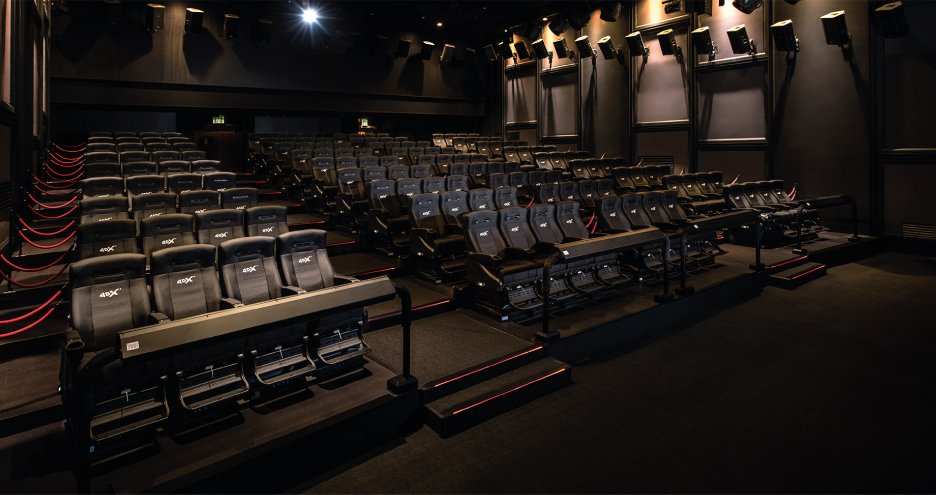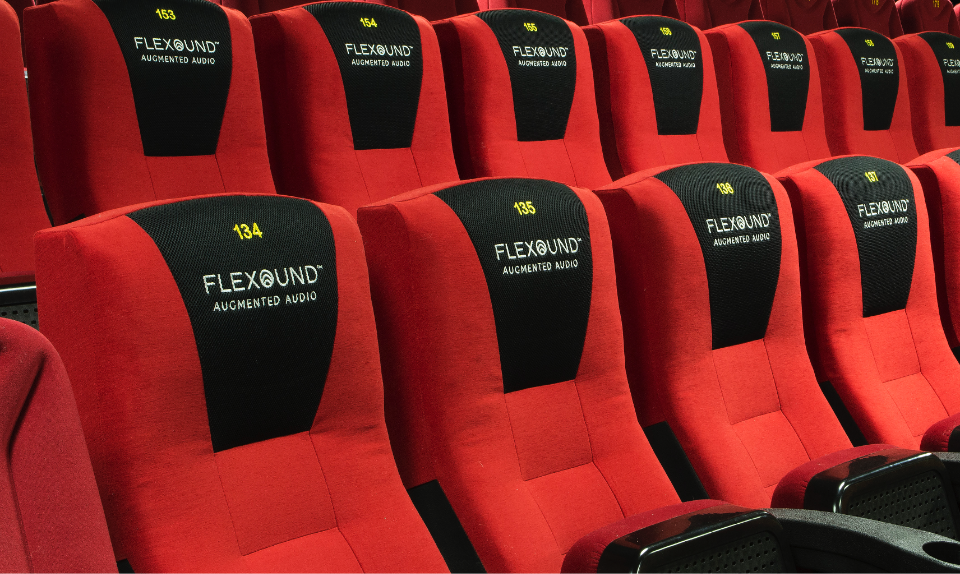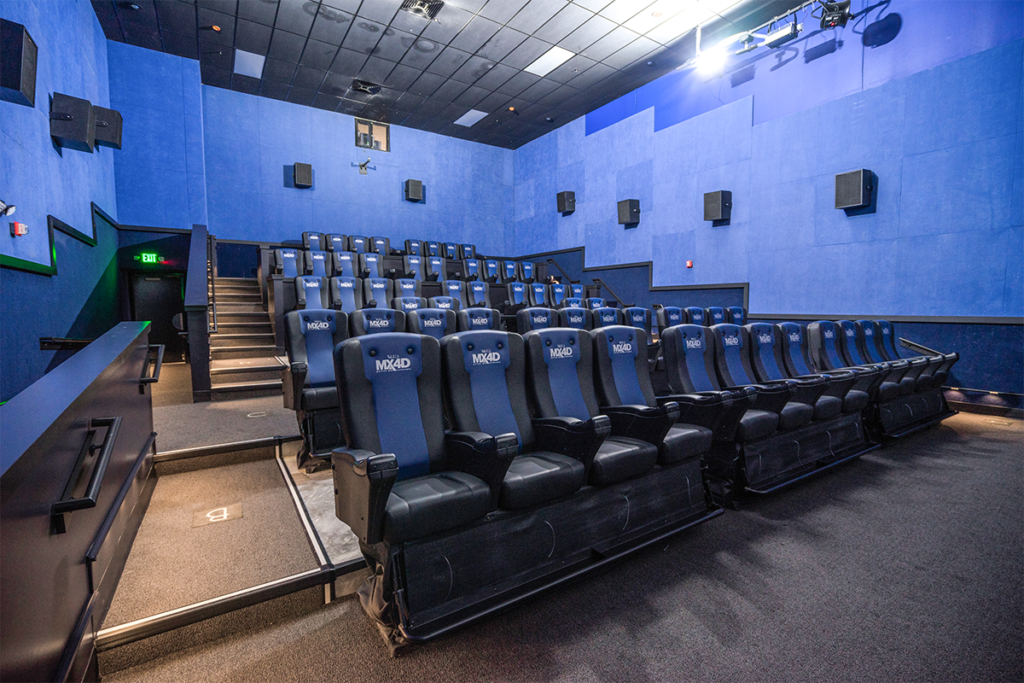With more than 39 percent growth in 2018 and 1,696 systems installed worldwide, according to UNIC, immersive seating has proven to be much more than a mere fad. But much of the growth has been concentrated in emerging markets where the construction of new theaters—and the race to differentiate through premium enhancements—is booming.
The pace has been somewhat slower in Europe. Opening its first screen in the Netherlands in 2010, D-Box was the first player to enter the European market and has now expanded to 200 screens and 13 countries. Two years later, CJ 4DPLEX opened four 4DX theaters with Cineworld Cinemas in Hungary, Poland, and the Czech Republic. With more than 141 European locations in 24 countries—which constitute 33 percent of all 4DX auditoriums worldwide—4DX has established the strongest presence in the market. Arriving later in the game, MX4D invested in Europe for the first time in 2017 via a partnership with Cineplexx in Croatia. More recently, local players such as Finland’s Flexound Augmented Audio, which uses audio vibrations to add the sensation of touch, have also emerged amid foreign giants.
But while the market is starting to move faster, the old continent’s conservatism, coupled with a slower pace of theater construction, has presented challenges to exhibitors and resulted in variable growth of immersive seating in different European markets, led by Germany, Eastern Europe, France, and the U.K.
“Overall, the European market hasn’t moved that quickly for 4-D,” explains MediaMation CEO Howard Kiedaisch. “There are a few different reasons for that. When people are building from scratch, they think about it, whereas when they need to retrofit, it’s harder. If you’re building new multiplexes and starting from scratch, it’s very easy to contemplate, ‘OK, how do I get this with a 4-D solution in mind and being aggressive in expanding?’ If you’re refurbishing, it takes a little bit more effort and time, and you need to ask if you’re willing to disrupt the theater.”
Screen count indeed remained stable from the beginning of the decade and only grew in the last two years, rising by 3.7 percent to 42,000 screens in UNIC territories in 2018. The growth was particularly impressive in Eastern Europe. On top of anemic construction rates, most European territories are characterized by a considerable number of small, local, independent exhibitors—often seen as the gatekeepers of European cinema’s cultural diversity—who can find it harder to bear the financial costs of new technologies and refurbishments.
CJ 4DPLEX CEO JongRyul Kim and Flexound CEO Mervi Heinaro also point to more conservative decision-making on the part of European exhibitors. “For decades, cinemas have been focusing on big-screen, augmented sound, comfortable chairs, and F&B, not on the moviegoing experience itself,” says JongRyul Kim. “Bringing the innovative and dynamic cinematic experience to rather conservative movie theaters in Europe was a huge challenge at first,” Heinaro observes, “In many countries, exhibitors are looking for new solutions. Of course, for small exhibitors, it’s harder to find financing. The bigger ones might not be as fast sometimes; I think one of the traditional European handicaps is that we’re not extremely fast decision-makers.”

But D-Box’s sales director Jean-François Gagnon dismisses a view of Europeans as conservative: “We first launched our technology in the United States and Canada back in 2009. Because of that initial success, we found ourselves installing motion seats in the Netherlands and then Germany, Slovakia, and the United Kingdom just one year later. We see Europeans as early adopters because, in our experience, both exhibitors and moviegoers are looking for that kind of innovative, immersive experience.”
To deal with the limitations posed by these factors, immersive-seating companies have devised new business models catering to the needs of European exhibitors, both large and small. “We have recently put a financing package in place and we’re now able to offer a revenue share model,” says MediaMation’s Kiedaisch. “In some places exhibitors say, ‘I want to buy it. I don’t want you involved in my business. I have deep pockets.’ Other people say, ‘I want to phase out my expenditure, I want it to be based on the money that it makes.’ It depends on the appetite, the capability of the exhibitor. We’re now offering both options, and we’re just starting to get out there and push that as an opportunity.”
Flexound, on the other hand, responded to exhibitors’ fear of losing seating because of the installation of recliners by offering a different form of immersive seating that does not necessarily require larger seats. Flexound sells its system as a one-time buy, but cooperates with seat manufacturers to incorporate its technology into the type of seats that suit the exhibitor’s needs. Moreover, Flexound is compatible with any content as is, without requiring reprogramming or recoding on the part of the exhibitor.

While overall European admissions dipped by 3.4 percent this year, immersive-seating companies remain optimistic and believe the technology can stimulate moviegoing; they point to the higher-than-average occupancy rates for their screens. “The whole cinema industry, we all need to bring the people to the theaters,” Heinaro says. “I think it’s about creating experiences and creating something bigger. Since synchronized sound in the 1920s, we’ve only been using hearing and our vision; we haven’t been using the other senses.”
Hollywood content is driving the market, but there is an increasingly strong demand for programming local content as well. For example, last year, 4DX produced the French titles Taxi 5 and Alad’ 2, while the top-grossing Serbian film of 2018, Junzi Vetar (South Wind), was also a local MX4D hit.
Kiedaisch points out one challenge in adapting local content: “Those situations are a bit like the chicken and the egg, where you need enough screens to have it make sense to invest. And so as the platform gets better, more people can say I’ll make 4-D content, but then exhibitors say, ‘Well, if you make the content, I’ll buy the screens …’ As the platform is growing, we’re engaging more and more with local exhibitors and distributors who want to find local content.”
Today, Eastern Europe—which scored the highest growth in terms of admissions and new screens last year—and Central Europe are leading focuses for immersive-seating providers. “We’re finding Eastern Europe to be extremely fertile, because you have so many European and international players who finally want to take cinemas to the next level,” says Kiedaisch. “One of those things is going to be the large format, and in many cases one of those things is going to be the 4-D format. The amount of interest from Eastern Europe right off CineEurope was just extraordinary.” Through a partnership with Cineplexx and Diesel Kino, MX4D has focused on Austria, Serbia, Croatia, and Slovenia but is preparing for a bigger rollout later this year.
Despite a 13.9 percent decline in admissions in 2018, confirming alarmist predictions of a more structural decline, Germany concentrates key investments. D-Box has 100 screens there alone—half of its count in Europe. 4DX opened two auditoriums this year, at the Cineplex Bayreuth and Filmpalast, and MX4D expects new openings in Q4 of 2019.

France and the U.K. are equally important markets. D-Box is present in 11 locations in both countries, and MX4D anticipates builds in Q1 and Q2 of 2020. 4DX currently operates 35 cinemas in France (34 with Pathé, which opened a 4DX ScreenX at the Pathé Beaugrenelle in Paris and Pathé La Joliette in Marseille earlier this year), as well as 22 in the U.K. with Cineworld.
Immersive-seating players are beginning to rush to Scandinavian countries. Last year, D-Box invested in Norway and is looking to expand further in Scandinavian countries following 4DX’s presence in Norway, Denmark, and the Netherlands. Flexound Augmented Audio opened its first commercial theater in its home country in February with great support from the local community.
One region is lagging behind: Southern Europe. Only 4DX is present in Spain and Portugal, while Italy, Malta, Greece, and Cyprus—perhaps due to the years of economic crisis plaguing the area, which has hampered attendance, capex, and new theater construction—have not attracted any investments to date.
The post Rocking the Old Continent: Immersive Seating in Europe Faces Unique Challenges appeared first on Boxoffice.
from Boxoffice





0 comments:
Post a Comment